Search ranking algorithm volatility
Find out how big changes being detected in Google's search algorithm.
When analyzing website's organic ranking positions, one thing must always be accounted for - changes in search engine ranking algorithm.
Search engines sometimes announce large updates, but not always. And instead of spending countless hours trying to figure out what went when there's a drop in rankings, it's worth knowing if the algorithm has changed.
Multiple keyword tracking tool providers have created publicly available SERP change monitoring tools that provides a good way to measure the severity of changes.
Tools are listed in alphabetical order.
Volatility trackers
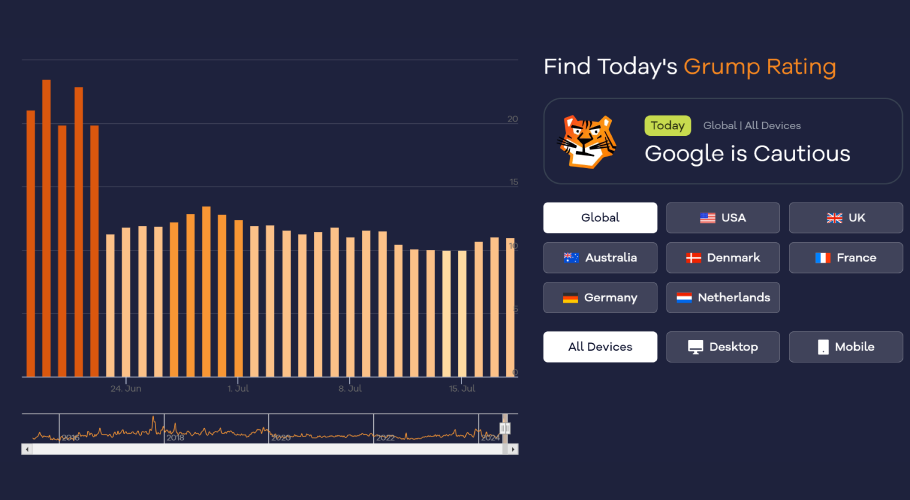
Accuranker is a dedicated rank tracking tool.
Its tool shows data globally as well as for markets such as USA, UK, Australia, Denmark, France, German and Netherlands.
It also allows you to toggle between mobile and desktop device ranking landscapes.
As a fun twist they categorize Google's mood in 4 levels:
- Chilled - Nothing to worry about here, everything seems calm.
- Cautious - Normal activity. If ratings show an upward trend over the next few days then it's likely that Google's mood is about to change.
- Grumpy - Google's in a bit of a grump - rankings are changing more than usual.
- Furious - Easy tiger! Google is angry today with rankings fluctuating at high speed - it’s likely that an algorithm update is taking place.
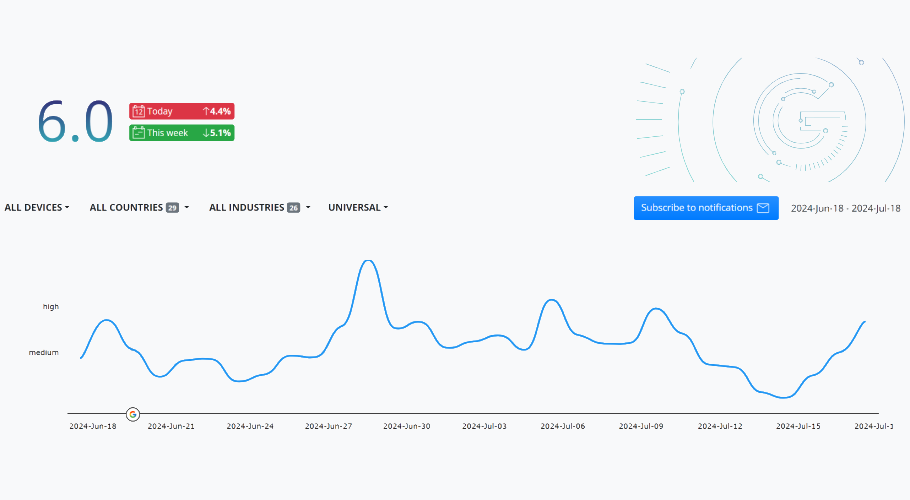
Advanced Web Rankings is a dedicated rank tracking tool.
Its tool monitors ~400k desktop and ~200k mobile keywords to measure the fluctuation. The data then is normalized to represent a score between 1 and 10.
You can see this information across 29 countries: Australia, Belgium, Brazil, Canada, Denmark, Finland, France, Hong Kong, Ireland, India, Italy, Japan, Mexico, Netherlands, Norway, New Zealand, Poland, Romania, Spain, Singapore, Sweden, Switzerland, Turkey, United Arab Emirates, Vietnam and South Africa.
And you can see the fluctuation across 25 industries: arts & entertainment, business, careers, education, food & drink, law / government / politics, non-standard content, shopping, society, technology & computing, news / weather / information, style & fashion, hobbies & interests, personal finance, health & fitness, travel, family & parenting, home & garden, pets, sports, real estate, automotive, illegal content, religion & spirituality, science.
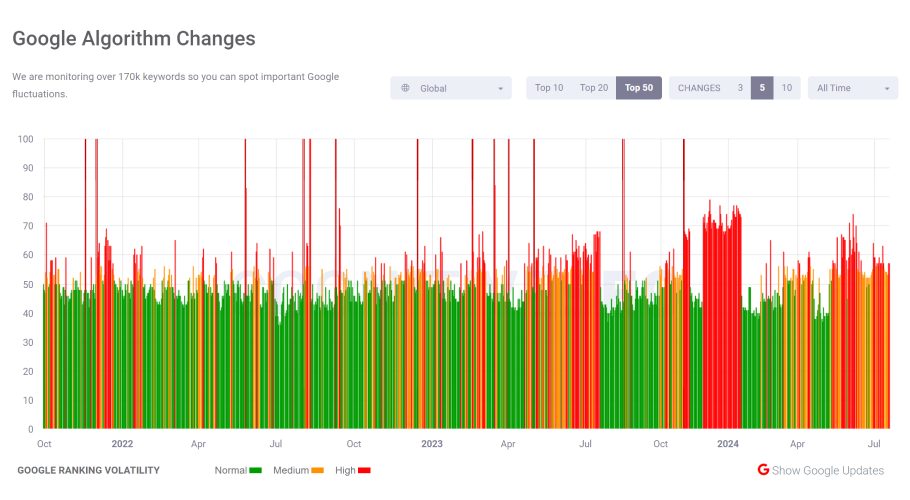
Cognitive SEO tool monitors ~170k randomly selected keywords for both desktop, mobile and local rankings. It then is compared to the previous day, normalized and presented as a score on a scale from 1 to 100.
It's available for 12 countries: US, UK, Australia, Canada, Germany, Spain, France, India, Italy, Netherlands, Romania, Turkey.
Additionally, you can filter changes by:
- Position. Which positions Top 10, Top 20 or Top 50 have changed.
- Change severity. How big changes have taken place - change by 3, 5 or 10 positions.
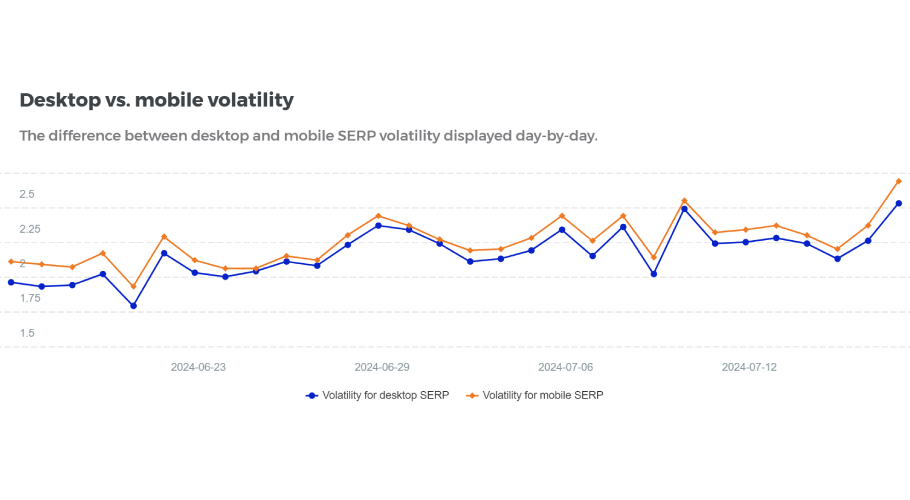
Mangools is an all-in-one SEO tool.
The data in the tool is based on ~4m keywords.
The tool shows the data in 3 distinct views:
- Desktop vs. mobile volatility. SERP volatility desktop and mobile compared side-by-side.
- Keywords with unchanged positions. The percentage of keywords which positions remained the same compared to the previous day.
- Changes in top positions. The percentage of keywords that left one of the four categories (Pos. #1, Top 3, Top 10, Top 100) compared to the previous day.
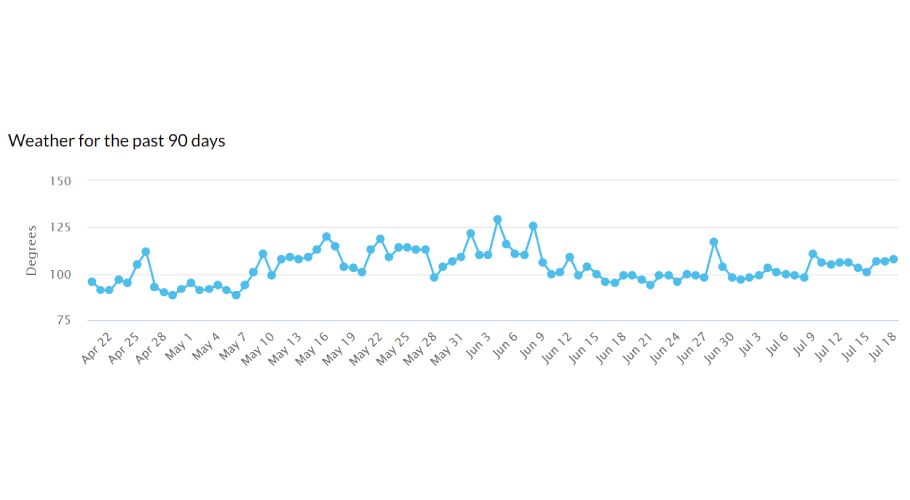
Moz is an all-in-one SEO tool.
Moz tracks a hand-picked set of ~10k keywords (across 20 industry categories and 5 major US cities) and analyze page one of Google organic results, comparing it to the previous day.
Instead of a typical score, Moz measures the change as a temperature, which reflects the degree of change in the day-over-day rankings, with an uneventful day being about 70°F. So the hotter the temperature, the more changes have been detected.
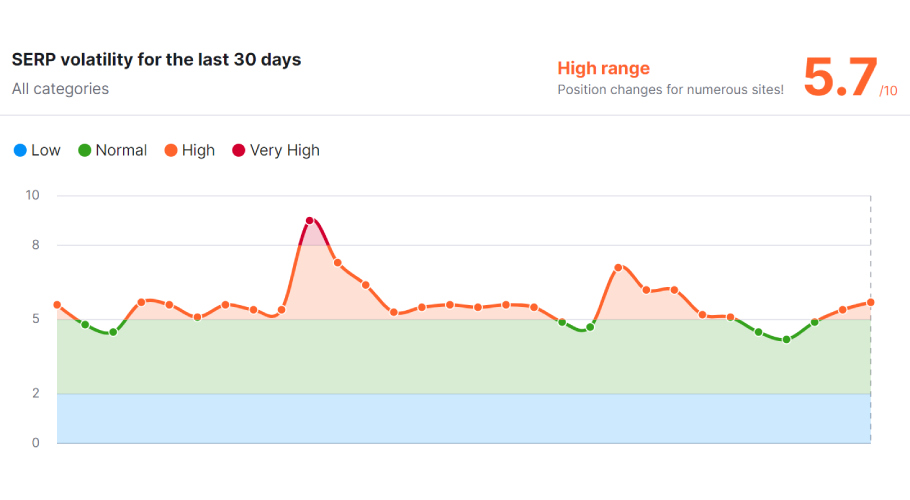
Semrush is an all-in-one SEO tool.
The tool shows the volatility in a chart categorized in 4 levels: low, normal, high and very high.
Information is available for Google search engine across 8 countries: US, UK, Germany, Italy, Spain, France, Australia, Japan. Also it provides information for search engine Baidu in China.
You can also drill down the changes across 24 categories: arts & entertainment, autos & vehicles, beauty & fitness, books & literature, business & industrial, computers & electronics, finance, food & drinks, games, health, hobbies & leisure, home & garden, internet & telecom, jobs & education, law & government, news, online communities, people & society, pets & animals, real estate, reference, science, shopping, sports, travel.
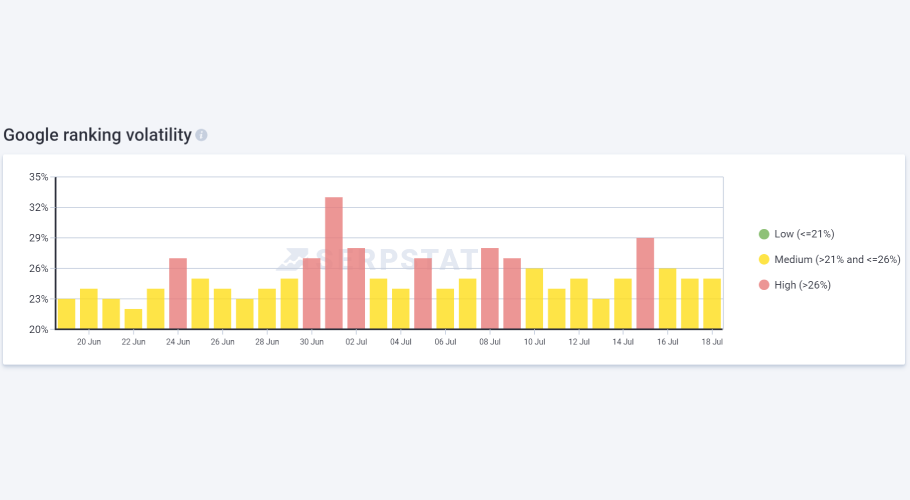
Serpstat is an all-in-one SEO tool.
It's a very simple tool that shows one chart showing the severity of changes. Options to filter by devices, country or category are not available.
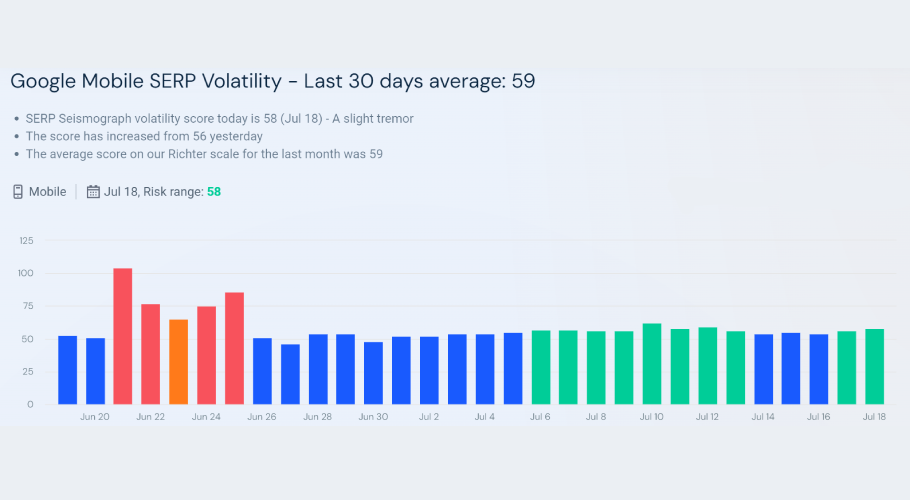
SimilarWeb's SERP Seismometer measures SERP fluctuations for 10K+ domains and keywords daily.
The information is presented in two charts for each device type and is color coded into 4 categories depending on the severity of the Google's algorithm change detected.
Options to filter by country or category are not available.
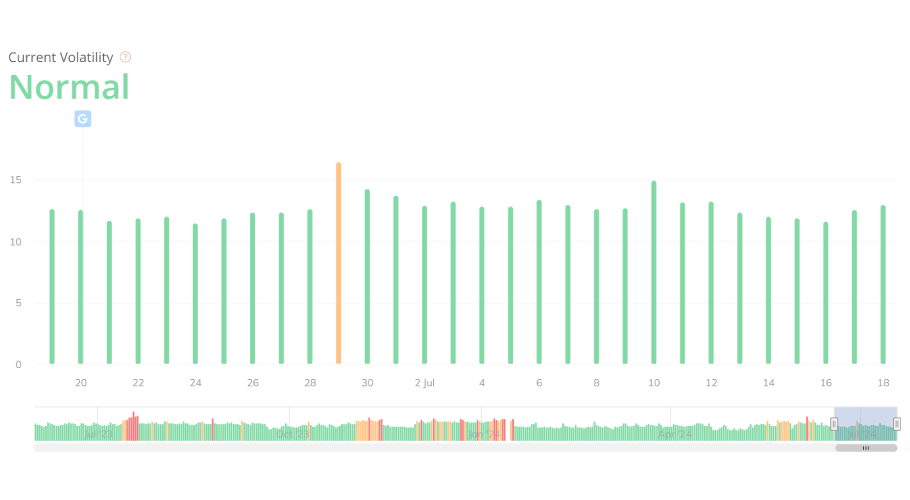
Wincher is a rank tracking and keyword research tool.
Wincher monitors Google organic results for ~30k keywords across 6 major countries (US, UK, France, Germany, Spain, Netherlands and Sweden) for both desktop and mobile devices. The changes detected are highlighted in the chart in three groups: normal, high and very high.
It also shows information about changes for SEO features such as answer box, forums, FAQs, featured snippet, images, paid results, people also ask, recipes, shopping, site links and top stories.
